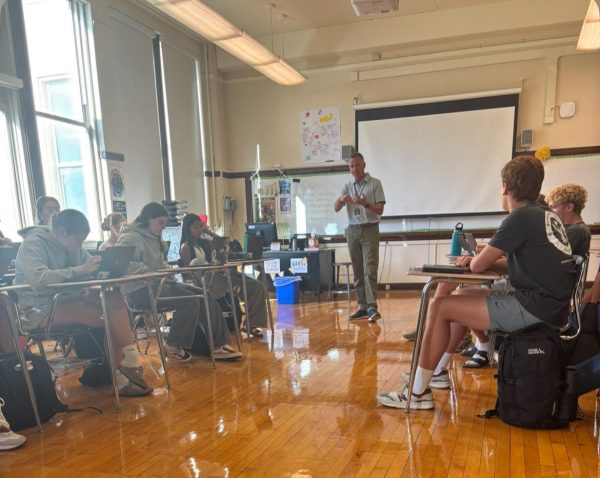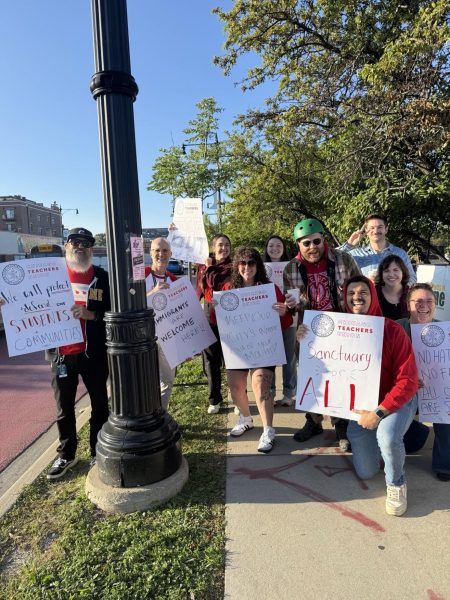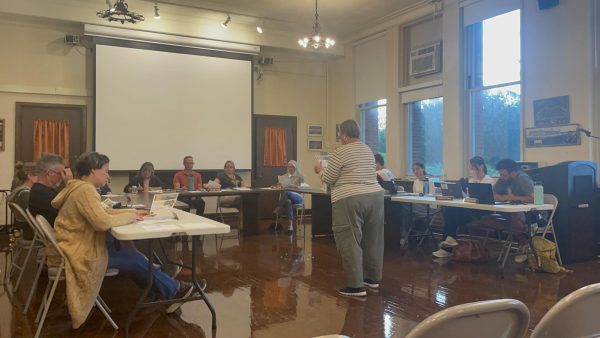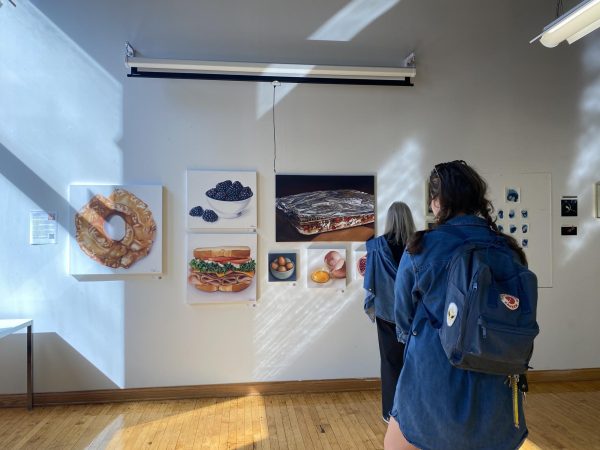The ‘fake news’ faux pas
A man walks into a small pizza place in North Carolina carrying a loaded weapon, demanding somebody explain to him the conspiracy that they’re hiding. The sirens can be heard in the distance, and the man shoots at the floor multiple times. This was all the result of what the media called “fake news.”
Fake news first started gaining traction in November 2016, around the time of a political scandal known as “pizzagate.” Pizzagate was centered around the leaked DNC emails.
According to the New York Times, during the Clinton email scandal, a set of emails about pizza and other foods from high ranking Democrat John Podesta to other top Democrats was discovered.
Some alt-right supporters were not convinced that these conversations were actually about pizza, and speculated that the different foods mentioned were cover words for a secret pedophilia ring.
The theory escalated into something far more serious when North Carolina resident Edgar Welch showed up at the Washington pizza parlor with a weapon to “self-investigate” the conspiracy. The man fired his gun into the ground a few times, and was swiftly arrested.
Many mainstream media outlets, such as CNN and the New York Times, placed the blame for the incident on “fake news.” They defined “fake news” as outlandish conspiracy theories, based on a lack of real evidence, and intended to deceive people by being passed as legitimate journalism.
After Trump’s election victory, people questioned how the polls and media could have been so wrong about Trump’s election chances. The rise of the alt-right movement was largely underestimated by mainstream media, mainly due to its numbers being hard to follow. The movement rejects mainstream conservatism and views today’s politicians as ineffective. The movement is based online, according to the New York Times.
Tracking the size of an online movement is especially difficult, so when these voters showed up in a huge way at the polls, many of the polls were completely wrong. The incorrect polls only seemed to vindicate the alt-right perception that the media is actively working against them.
Many speculated this ideological shift against the media was the result of “fake news,” and helped swing the election in Trump’s favor.
Ms. Caracci teaches AP US Government and AP US History at Lane and has been following politics closely most of her life.
“The media always plays a big role in how we perceive our elections,” Caracci said. “Do I think that the ‘fake news’ angle influenced people? Probably. But I also don’t know that I would give it credit as being the deciding factor.”
The rise of Donald Trump demonstrated conservative America’s distaste for the establishment, specifically the media they feel that is pitted against them.
Trump snubbed CNN reporter Jim Acosta at his Jan. 11 press conference and called the organization “fake news.” He justified his claim by referencing how CNN reported on a supposed leaked document detailing “Kompromat,” or Russian blackmail, that the Kremlin had on Trump. The document, which portrayed crude stories regarding Trump, was found unverifiable by most news sources.
Trump took the document personally, and blamed CNN and Buzzfeed for deliberately trying to sabotage his reputation and legitimacy as president. He went on to refuse questions from Acosta and continued his press conference as if nothing had ever happened.
“I don’t think anyone should be refused questions by our government officials,” Caracci said. “I don’t think any news organization should be refused access to our government officials because I think that relationship between the government and the press is one of the most important linkages in our system.”
The distrust Americans have in the mainstream media has only grown in the past year. A Gallup poll found that from 2015 to 2016, trust in the media dropped eight percent among the American public, and dropped even further in specific groups, particularly Republicans.
The poll found that Republicans had their lowest confidence in the media in 20 years last year, with only 14 percent of Republicans believing the media to be trustworthy. In total, only 32 percent of Americans view the mainstream media as a reliable source.
Trump did something he had never done before at that Jan. 11 press conference: he referred to CNN as “fake news.” Until then he had only claimed they were biased and treating him “unfairly.”
“‘Fake news’ is something that’s being produced by an irreputable source that has no confirmation — it’s untruthful,” Caracci said. “If you’re starting to lump in other news organizations that are legitimate news organizations as producing fake news when they are actually just reporting what’s going on, I think that’s a very very dangerous thing to do.”
However, “fake news” is still a constitutional right. It is categorized as free speech, and is therefore protected by the First Amendment. The problem is that “fake news” is such a loosely defined term that anybody can claim a story is fake or real, without any proof.
It is one of an American citizen’s rights to say lies, or even hate speech, but the problem occurs when either is passed as legitimate journalism. Journalists are supposed to abide by a Code of Ethics, a code that creators of “fake news” are by no means forced to follow.
“It is protected, as of right now,” Carracci said. “Now will we see motions going forward in Congress to perhaps try to make laws against it? They could attempt it. But I think any laws that would be made against it would be struck down by the Supreme Court because we have a very very strong right embedded in the First Amendment.”
Although laws may not do much to combat fake news, Facebook and Google have begun to sort through their content to try to remove fake news from their sites. According to the New York Times, Google removed 340 websites’ ads from their advertising service, and 200 were removed permanently. Google was careful not to mention the term “fake news,” and instead said that those sites were removed because they were “suspected of misrepresenting content to users, including impersonating news organizations.”
Your donations directly fund the Lane Tech student journalism program—covering essential costs like website hosting and technology not supported by our school or district. Your generosity empowers our student reporters to investigate, write, and publish impactful stories that matter to our school community.
This website is more than a publishing platform—it's an archive, a research tool, and a source of truth. Every dollar helps us preserve and grow this resource so future students can learn from and build on the work being done today.
Thank you for supporting the next generation of journalists at Lane Tech College Prep!

Matt is 17 years old, an athlete, and a Junior at Lane Tech. He enjoys playing hockey, and is always willing to discuss new ideas and innovative solutions....




